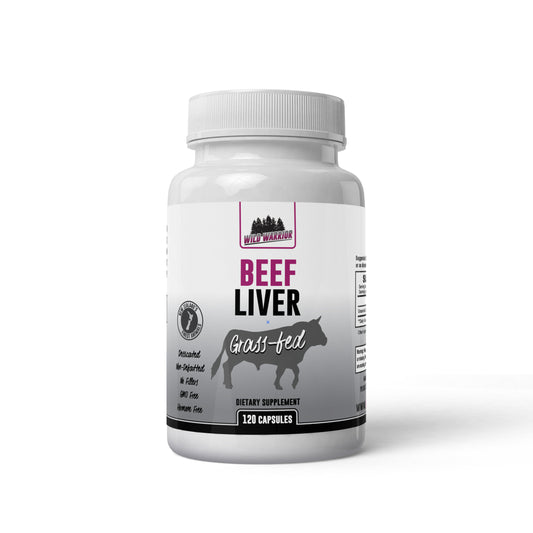In the world of optimal wellness, a lot of attention is paid to getting in shape, looking lean and feeling good about the reflection you see in the mirror. That goes even further when you take into consideration the feeling of excitement you get when people comment on your defined arms, abs and legs.
Be it at a pool party, the beach or random event where you wear revealing clothing, you cannot deny that looking good makes you feel good. And to get to that place, it takes some effort, sweat and sacrifices. Keep reading to discover 5 habits to boost brain health and mood.

Habits to Boost Brain Health and Mood
There is a whole other side of optimal wellness that is less talked about but equally as important as making your body look good. It involves your brain. People often talk about self-care and how important it is, but they often don’t comply and slowly slip into the abyss of depression and anxiety.
This makes it hard to hit the gym, go for a run or even get out of bed in the most extreme cases. Statistics show how big of a problem this is too. According to the Centers for Disease Control, there are approximately 55.7 million doctor’s visits each year caused from mental disorders.
Truth be told, everyone goes through a bout of depression and anxiety from time to time. It’s part of life. But what if you can get into a flow where you become almost immune? Living a life of perpetual happiness is not as far-reaching as it may sound. All you have to do is execute a little bit of discipline, just like you would with getting fit.
Except this time, you are getting your brain fit and keeping it there. In the big picture, it’s really no different than your muscles. You need to work them with resistance and feed them properly in order for them to grow and look healthy.
The same principles can be applied to the brain to improve your mood and cognitive function and make you as resistant to mental challenges as possible. This all revolves around a key protein called brain-derived neurotrophic factor (BDNF).
When BDNF is high, you feel healthy, happy and focused. When it is low, you feel down, depressed and out of sorts. It makes sense to not only work on your guns, but also go inside your head and not neglect the computer that runs the show.
If you think about it, everything you do starts with a thought. If your brain is hitting on all cylinders, everything else will fall in line perfectly. That is one of the secrets of being at the top of your game and not being one of the statistics listed above.
So if you are wondering how to boost BDNF, thus improving your mood and brain function, here are five hacks to send you in the right direction.
Move more and sit less.
Nothing can put more of a damper on your brain function than sitting for long periods of time. Not only does this make your body tight and muscles weak, but it also doesn’t stimulate much brain activity.
A simple 30-minutes of daily exercise of any kind can go a long way in boosting your mood and firing up your brain cells. You can even accumulate this amount of time if you have a busy schedule.
The fastest and easiest route to take is going for a power walk. It takes little effort, no equipment and you can do it multiple times during the day.
Perform 3-dimensional exercises.
If you’re really looking to improve brain function and mood at an accelerated pace, then take exercise one notch higher through the medium of 3-dimensiaonl movement. To be more specific, perform exercises that are complex and involve crossing the midline of the body.
To add context, the “midline” is an imaginary vertical line that separates your body into halves if you are looking in a mirror. When you do exercises that are linear like biceps curls and triceps extensions, you are working a specific muscle and not crossing over that imaginary line.
In doing so, you can make your arms bigger and more defined, but that only offers a slight benefit to your brain. The neurological load is very small. A better way to go is performing cross-body patterns that are complex instead of basic.
Here is an example of a 3-dimensional exercise that can work your muscles, but more importantly, target your brain. It’s called a Star Sit-up Rollover Plank Cross Crunch.
Lie flat on your back with your arms and legs spread out in an “X” pattern. Raise your left leg and right arm as you brace your left forearm on the ground. Rotate to your left side as you touch your right hand to your left foot. Lower yourself down and repeat on the other side.
Once you come back down, extend your arms overhead and roll left onto your stomach. Push yourself up into a plank position and hold yourself on your left hand and right foot as you bring your left elbow and right knee together under your body. Repeat on your other side and lower yourself back down so you are on your stomach.
Extend your arms overhead and roll back to your starting position. Begin the exercise again and this time roll to your right and do the plank cross crunch. Lower yourself back down and return to the starting position the same way you came.
Continue going back and forth until you’ve done a series of reps. Make sure to do an even number each direction.
Performing 3-dimensional exercises does not need to be as complicated as this one either. You can simply stand up and alternate lifting one knee and touching it with your opposite hand and go back and forth in a marching fashion. All forms of complex, 3D movement will have a positive effect on your mood and brain function.
Fast more often.
Regardless if it is periodic fasting, intermittent fasting or fasting mimicking, you cannot dispute the benefits of this practice. In most situations, people look to fasting as a weight loss tool. And they are absolutely correct. It can definitely help shed pounds.
But the more important aspect of fasting that often gets overlooked is the effect it has on brain function. A number of physiological changes take place like hormones come back into balance, bad cells get eaten for energy (autophagy) and most importantly, brain function and mood both get elevated.
That is no accident. It all happens because fasting increases BDNF. And in the event you are intimidated by the thought of giving up food for a couple days or even an extended amount of hours, that’s where fasting mimicking “comes to the table.”
You go through 5 days of eating small portions of food where you still get all the benefits that water fasting can provide. If you want to trigger BDNF and try to hit that euphoric feeling of happiness associated with fasting, then fasting mimicking is a great option. Just think of it as nourished fasting.
Include turmeric and other specific foods into your diet.

On the opposite side of fasting, you have actual foods that can help boost BDNF. You should really consider adding these to your daily meal schedule. Among the most notable is fresh turmeric. Try to get organic if possible, to keep it clean.
It makes a great addition to smoothies, smoothie bowls, oatmeal, soup, tea and curries. It is best to pair it with some freshly ground black pepper too as it helps with the absorption of curcumin, which is the main substance found in turmeric that offers the benefits.
A few other foods to add to the mix include raw chocolate (cacao), red grapes, olives, olive oil and cold-water fish like mackerel and salmon.
Lay in the sun.
Have you ever heard of the word “ecotherapy?” This is a natural form of treatment for depression and anxiety that simply involves going outside and connecting to mother nature.
Such things as the views of mountains and rolling grass-covered hills, the smell of pine trees, the sound of waterfalls and the collection of negative ions from the ground when you are barefoot all have a profound effect on brain function and mood.
But, it gets even better than that when you expose yourself to the sun.
Although it is feared by many, the sun is probably one of the most healthiest things for your body. You just have to respect it and use it correctly. If you were to get a mere 10 minutes of sun exposure per day, your body would get a massive vitamin D release. This, in turn, sets off a secondary reaction where you get an equally high release of BDNF.
That is the main reason why you always feel so happy when you are on vacation and sitting on a sun-drenched beach. It is best to get as much of your skin exposed to the sun as possible with no sunscreen. That may sound contradictory to what you’ve always been told, but it’s the best way to get the vitamin D release.
Slathering on tons of sunscreen will defeat the purpose because your skin will be blocked of the sun’s rays. The key is to only be exposed long enough to get the benefits. Then you can either head back inside or put your sunscreen on at that point. Follow this pattern and it’s a win-win situation.
Final Word on Brain Health
Overall, you should treat your brain just like any other organ in the body. It should be worked, it should be fed good, clean food and it should also never be taken for granted.
You owe it to yourself to be as happy and healthy as possible every day of the week. If you put what you just learned into action, you will have no trouble doing that. Then, not only will you be better off, but so will all the people who are close to you.
About the Creator: A Life and Career Dedicated to Healthy Living
Kevin David Rail is a Fitness Nutrition Specialist who’s certified through ACSM, ACE, NASM and AFM. He has a BS in Sport Management/Fitness and Wellness and was featured in the documentary films Fasting and The Motivation Factor for his expertise as a health and fitness professional. Kevin has helped thousands of people change their lives, lose weight, transform their bodies and become more motivated to take action.
He can be found on social media here:
- Instagram: fastingfitness_pro
- Facebook: Kevin David Rail
- YouTube: Fasting for Fitness
- LinkedIn: Kevin David Rail
- TikTok: @mibfit
- Twitter: @TrainerRail



